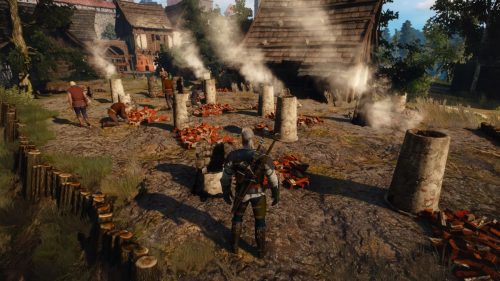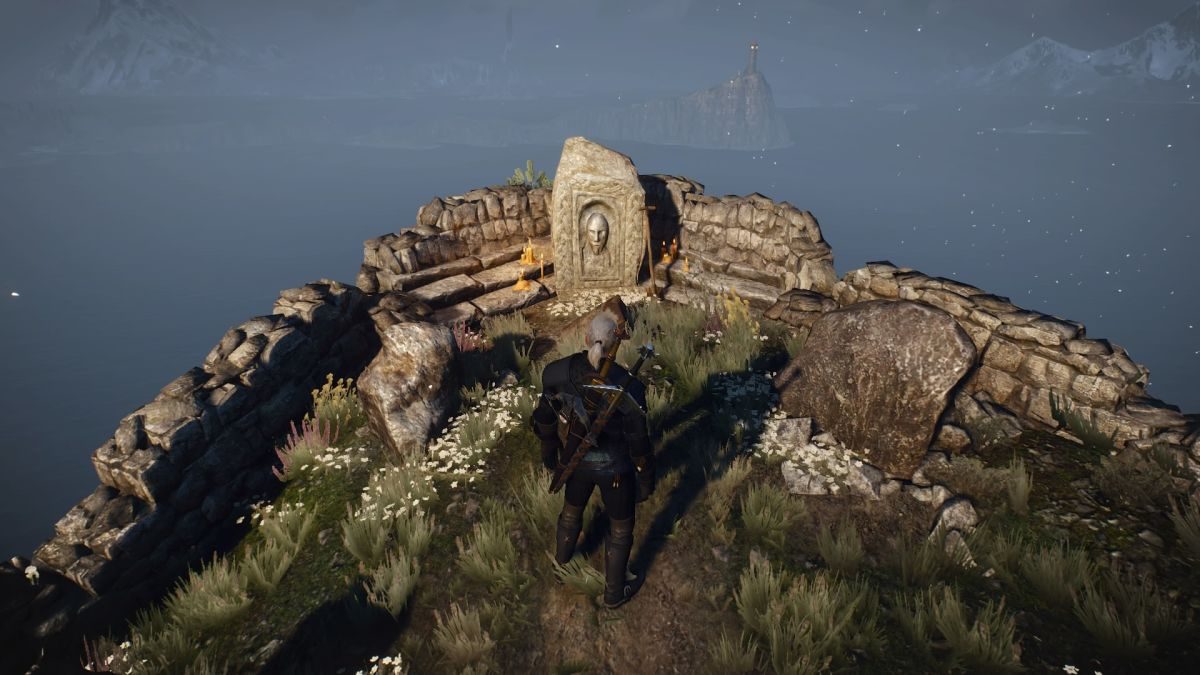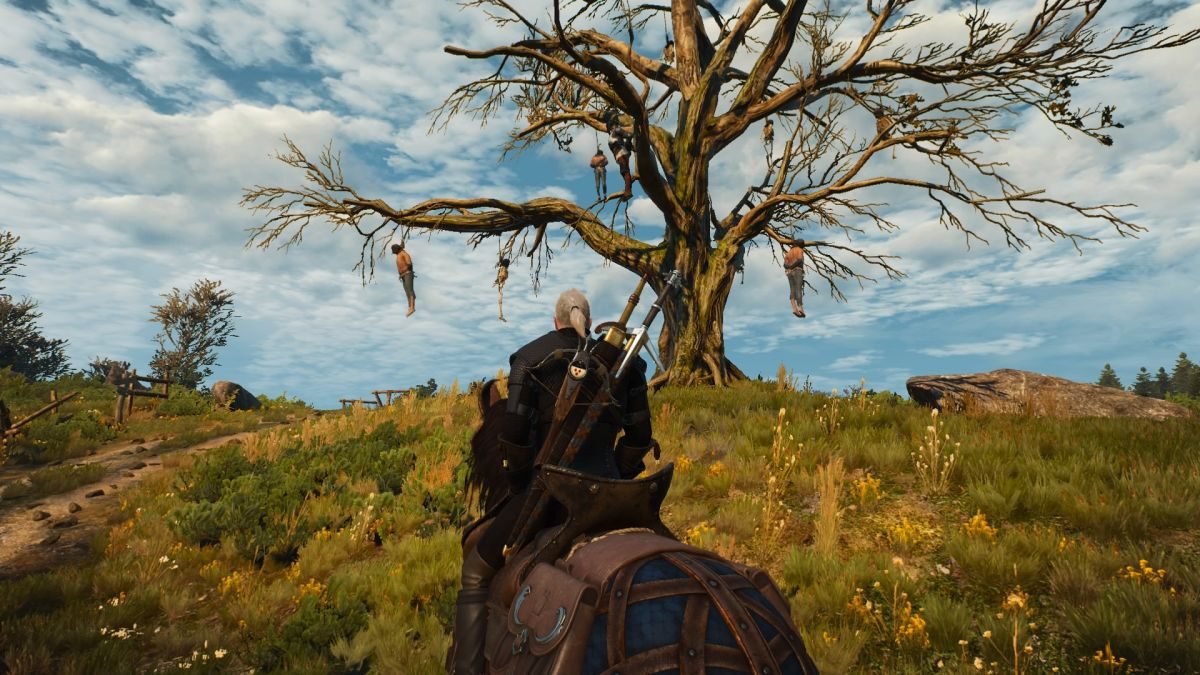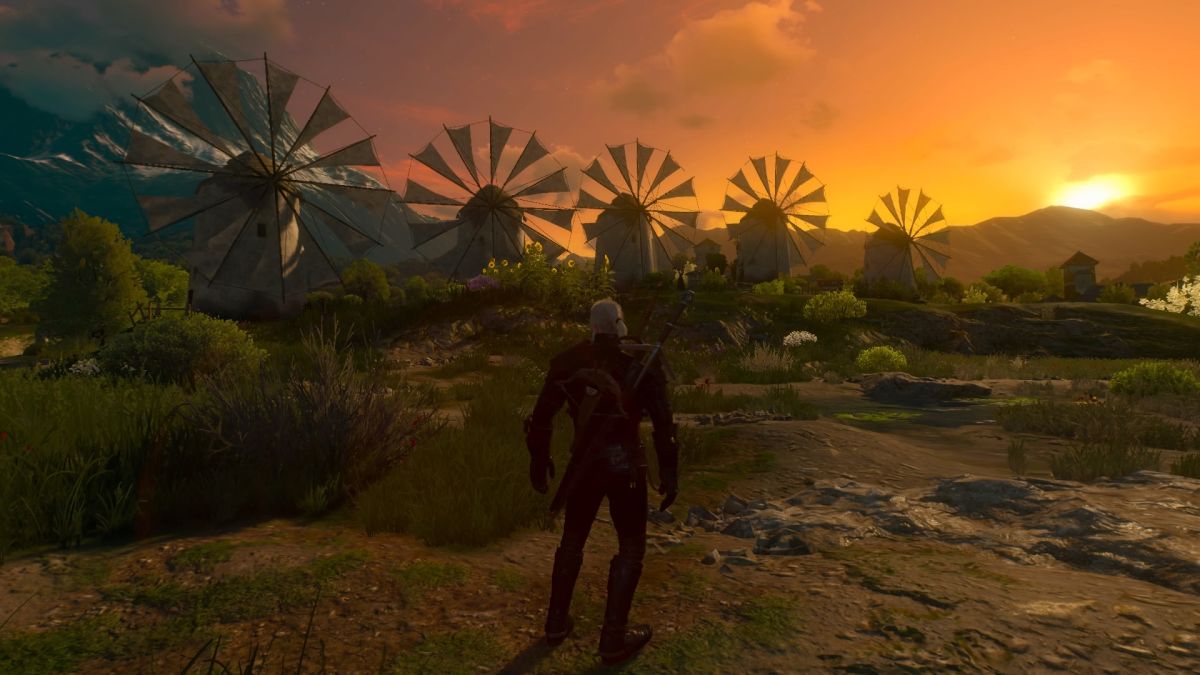The power of handcrafted visual design in video games
The city hums with life. The smoke billowing from the brickmakers ovens, the narrow cobblestone streets and even the crooked tombstones in the local cemetery are all small reminders of home. With a button press and push of the joystick, it’s time to dismount and reenter the city.
 It’s good to be back in Novigrad.
It’s good to be back in Novigrad.
Video games constantly struggle with presenting believable, living worlds. But as game developers push game worlds to be ever broader, sometimes bigger isn’t better. CD Projekt Red’s 2015 fantasy epic The Witcher 3: Wild Hunt remains a testament to the idea that the devil truly is in the details. Handcrafted details, like a well-placed stream or an unmarked grave, can give virtual locations a sense of history, culture and dynamism.
At a time in which Hello Games’ No Man’s Sky is using algorithms to build an entire universe, it’s important to reflect on the virtues of that kind of automated design. No Man’s Sky’s gameworld – an expansive universe of a quintillion procedurally-generated planets, each built using handmade art assets fed through a computer – is generated through patterns and repetition. The game is clearly a step removed from handcrafted design in game worlds, but it’s a step many developers are increasingly taking. Assassin’s Creed Unity, released by Ubisoft in 2014, used modular, procedurally-generated content in order to fill out a virtual version of Paris. And much like No Man’s Sky, other space exploration games like Elite Dangerous and Star Citizen are starting to use computers to build entire galaxies and planets.
With the development cycle of most games lasting years, it’s no wonder many developers have turned to procedural generation. It’s a common method used by game developers to create a large amount of content in a very short time.
But for Kacper Niepokólczycki, a senior environment artist at CD Projekt Red who helped shape the world of The Witcher 3, it’s handcrafted design that ultimately keeps gamers coming back.
“This approach is time consuming, but we believe the results are more than worth it,” said Niepokólczycki.
In “The Witcher 3,” landscapes dip and rise organically. Every village is covered in scratches and scars that imply centuries of history. Handcrafted environments tell wordless stories that are as powerful as any dialogue-driven scene.
“Sometimes it might be a small decal on the wall, other times it’s the entire decoration set for a small fisher house, for example. That’s what gives the game’s world its depth,” said Niepokólczycki.

Attention to each of these small details didn’t stop The Witcher 3 developers from building a massive world in which to tell an epic story. The game’s two largest areas, Novigrad and Skellige, stretch across a total of 52 square miles, 1.5 times larger than Los Santos, the detailed faux-Los Angeles in Grand Theft Auto 5. In order to build such a massive world, CD Projekt Red did need to use some procedurally-generated content as the framework for more manual artistry, Niepokólczycki admitted.
Still, all that size is worth nothing if the world doesn’t feel alive, which is why CD Projekt Red emphasized minutiae.
From small shrines dedicated to nameless gods to the bodies of hanging deserters swaying in the wind, the world of The Witcher 3 is full of beautiful and grotesque details.
Time, labor and funding will always hold some developers back from using this kind of design approach. Game design is fluid. Not every developer needs to be like CD Projekt Red. But designers should remember that gamers want worlds that they can live in. And part of that comes down to putting the human touch back in game design.
“It’s like if you compare a violin made by a machine and one that’s handmade by a master craftsman. You’ll end up with a violin either way, but the one that’s handmade sounds better and feels special,” said Niepokólczycki.






